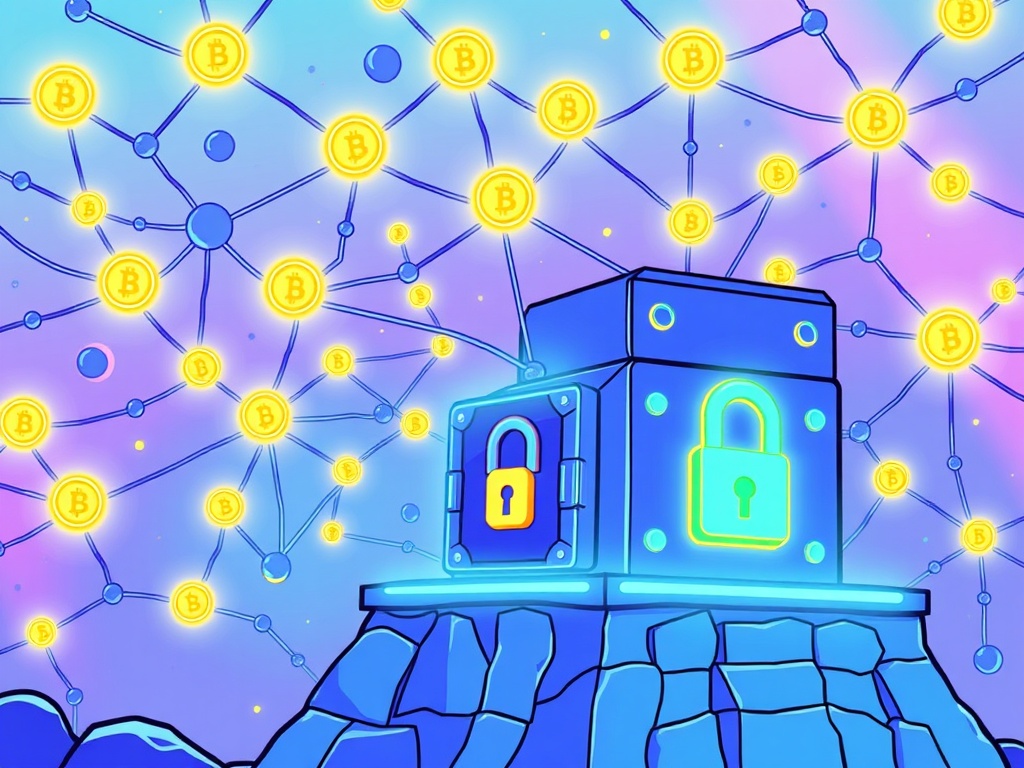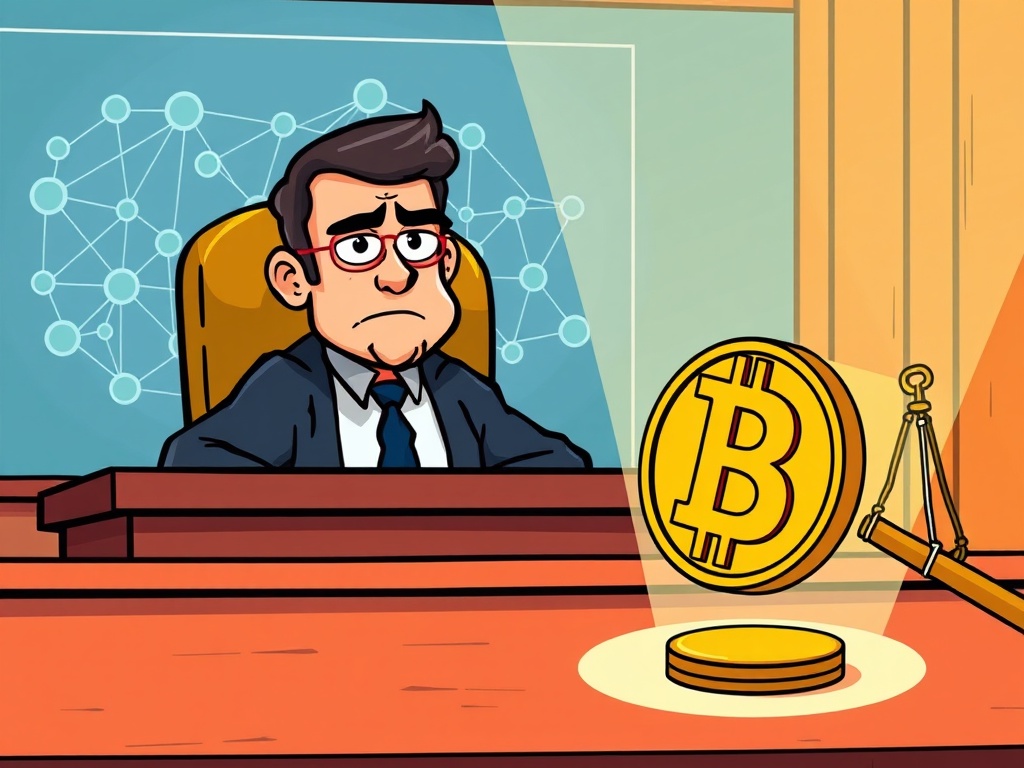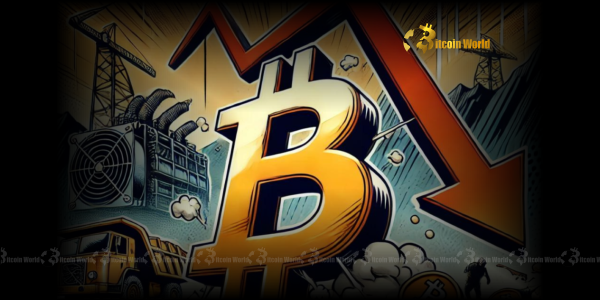BitcoinWorld

Tokenized Securities Revolution: Dinari Unveils Pioneering Layer-1 Blockchain
The world of finance is witnessing a groundbreaking shift, and tokenized securities are at the forefront of this revolution. Recently, tokenization firm Dinari made headlines by launching its dedicated layer-1 blockchain, a move poised to reshape how digital assets are managed and traded. This significant development, reported by Unfolded on X, marks a pivotal moment for the broader adoption of blockchain technology in traditional finance.
What is Dinari’s Revolutionary Layer-1 Blockchain?
Dinari’s new platform isn’t just another blockchain; it is a purpose-built infrastructure designed specifically for blockchain-based securities. A layer-1 blockchain serves as the foundational network, handling transactions and maintaining its own security without relying on other chains. Think of it as the core operating system for a new digital financial ecosystem.
This dedicated approach ensures that the network is optimized for the unique demands of regulated financial instruments. It promises enhanced efficiency, transparency, and security for the issuance, transfer, and management of various asset classes, from real estate to equities, all in a tokenized format. The goal of the Dinari blockchain is to bridge the gap between traditional finance and decentralized technology, offering a robust and compliant environment for institutional players.
- Dedicated Infrastructure: Built from the ground up for securities.
- Enhanced Security: Robust protocols to protect sensitive financial data.
- Regulatory Compliance: Designed with existing financial regulations in mind.
- Scalability: Capable of handling high volumes of transactions required by institutional finance.
Why is Digital Asset Tokenization Crucial Now?
Digital asset tokenization is rapidly gaining traction because it solves many inefficiencies inherent in traditional markets. By converting real-world assets into digital tokens on a blockchain, we unlock unprecedented liquidity, reduce settlement times, and lower operational costs. Imagine trading fractional ownership of high-value assets like commercial properties or fine art with ease.
This innovative process democratizes access to investments previously reserved for large institutions. It also introduces programmable money and assets, allowing for automated compliance and sophisticated financial instruments. The transparency and immutability of blockchain records minimize fraud and errors, building greater trust among participants. The launch of the Dinari blockchain significantly contributes to this evolving landscape by providing a dedicated, high-performance solution.
How Does Dinari’s Platform Impact Institutional Blockchain Adoption?
The move by Dinari is a strong indicator of growing institutional blockchain interest. Financial institutions often face challenges integrating public blockchains due to concerns around privacy, scalability, and regulatory clarity. A specialized layer-1 blockchain like Dinari’s addresses these concerns directly.
It provides a controlled environment where institutions can confidently explore and implement tokenized securities without compromising existing compliance frameworks. This tailored infrastructure can accelerate the adoption of blockchain within banks, asset managers, and other financial entities. It opens doors for new business models and innovative financial products, driving efficiency across the entire financial supply chain. For example, asset managers can now more easily manage portfolios of tokenized real estate or private equity.
Navigating the Future of Tokenized Securities
While the potential of tokenized securities is immense, challenges remain. Regulatory frameworks are still evolving globally, and interoperability between different blockchain networks is crucial for widespread adoption. However, dedicated platforms like the Dinari blockchain are paving the way by offering solutions that prioritize compliance and performance.
The future suggests a hybrid financial system where traditional assets seamlessly interact with their digital counterparts. This evolution will likely bring greater market efficiency, reduced barriers to entry for investors, and new avenues for capital formation. Dinari’s initiative is a significant step towards realizing this vision, showcasing a commitment to building the necessary infrastructure for a digitally native financial future. It reinforces the growing confidence in blockchain as a fundamental technology for the next generation of financial markets.
In conclusion, Dinari’s launch of a dedicated layer-1 blockchain for tokenized securities marks a pivotal moment for the convergence of traditional finance and blockchain technology. This strategic move addresses critical institutional needs, promising enhanced efficiency, security, and compliance for digital asset management. As the financial world embraces digital asset tokenization, platforms like the Dinari blockchain will undoubtedly play a crucial role in shaping the future of global finance, driving innovation and unlocking new opportunities for institutional blockchain adoption. The journey towards a fully digitized financial ecosystem continues, and Dinari is certainly leading the charge.
Frequently Asked Questions (FAQs)
Q1: What is a layer-1 blockchain?
A: A layer-1 blockchain is a foundational network that processes and finalizes transactions on its own, without relying on other blockchains. It forms the core infrastructure for decentralized applications and digital assets.
Q2: What are tokenized securities?
A: Tokenized securities are traditional financial assets, such as stocks, bonds, or real estate, that have their ownership or value represented digitally on a blockchain as tokens. This process allows for fractional ownership, increased liquidity, and faster settlement.
Q3: How does Dinari’s new blockchain benefit institutions?
A: Dinari’s dedicated layer-1 blockchain offers institutions a compliant, secure, and scalable environment specifically designed for managing tokenized securities. It addresses concerns around privacy and regulatory clarity, facilitating greater institutional blockchain adoption.
Q4: What are the main advantages of digital asset tokenization?
A: Key advantages include increased liquidity for illiquid assets, reduced transaction costs, faster settlement times, enhanced transparency, and the ability to programmatically manage assets and compliance rules.
Q5: What challenges does the tokenized securities market face?
A: Challenges include evolving regulatory frameworks across different jurisdictions, ensuring interoperability between various blockchain networks, and educating traditional market participants about the benefits and mechanics of blockchain technology.
If you found this article insightful, consider sharing it with your network! Help us spread the word about the exciting developments in tokenized securities and the future of finance.
To learn more about the latest blockchain technology trends, explore our article on key developments shaping digital asset tokenization institutional adoption.
This post Tokenized Securities Revolution: Dinari Unveils Pioneering Layer-1 Blockchain first appeared on BitcoinWorld and is written by Editorial Team





